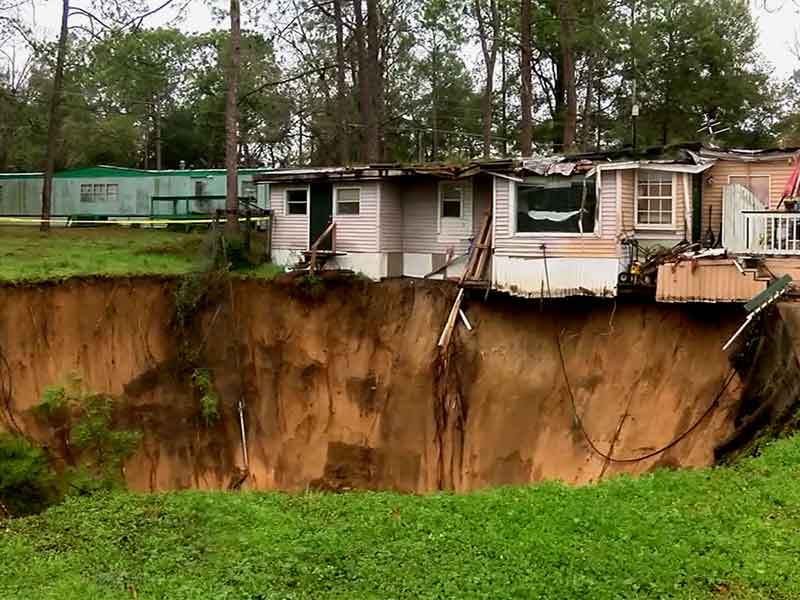
Ground sinkholes: how and why they occur
Ground sinkholes can be very dangerous indeed. As well as the dangers of being on or above the ground, the ground itself can suddenly slip away, swallowing us up along with our homes and vehicles. So what are sinkholes and how do they form?
They are literally holes formed by the subsidence of the earth when three factors combine: water, erosion and time. The flowing groundwater seeps through the granular soil, stones, sand in the topsoil and even through particles of the underlying bedrock. If the bedrock consists of something like gypsum, limestone or dolomite, the water can simply erode it, dissolving the fragile deposits. If these rocks are exposed to water continuously or repeatedly, large holes or even extensive cave systems can form in them. The high acidity of the water, due to absorption of carbon dioxide for example, can accelerate the process considerably. Quite a large proportion of the suburbs around Melbourne have highly acidic soils. This needs to be taken into account when planning the construction of all buildings.
The bedrock that is eroded by water splits, exposing deeper layers of sediment to erosion. Alternatively, the water may first erode the inner bedrock and then, through an opening, rise to the overlying (uppermost) layer of earth. Once the covering layer is eroded from the bedrock area, the continuation of the process depends on the soil type.
If the covering layer is loose sand, the bottom particles will be washed away or sink through depressions or cracks in the bedrock. The loose layers above will follow them, causing the entire covering layer to fall down sharply to fill the void. This can happen quickly or slowly, depending on the rate at which the bedrock erodes. Eventually, the sinkhole may work its way all the way down to them. Such sinkholes are called settling sinkholes.
Much more dramatic are the cases when the covering layer consists of clay. As the clay sticks together much more easily than the sandy soil, it does not all flow down into the hole in the bedrock. Instead, the flow of water constantly erodes the lower part of the clay layer, forming a large karst cavity that comes closer and closer to the surface. When the remaining layer can no longer withstand gravity, it collapses into the abyss beneath it. If a home stands on this spot, the owners will have to say goodbye to their possessions, and maybe even to their lives. Such dangerous sinkholes are called sinkholes.
Local geologists know quite well which areas are most prone to sinkholes. Based on geological research, this is common to karst features and “vulnerable” rocks (salt and gypsum). One of the signs of an area prone to sinkholes is the extensive cave systems carved into the bedrock.
There are also possibilities of water pipes bursting which may have caused a sinkhole in the ground. The erosion is caused by considerable and prolonged water leakage.
If you suspect a water leakage it is necessary to order a water leak detection service to avoid soil erosion and the formation of pits, which can cause considerable expense.
